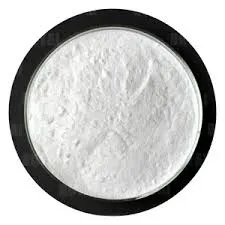
Lis . 19, 2024 12:45 Back to list
Applications and Benefits of Hydroxypropyl Methylcellulose in Various Industries
The Versatile Uses of Hydroxypropyl Methylcellulose
Hydroxypropyl methylcellulose (HPMC) is a semi-synthetic polymer derived from cellulose, widely used in various industries due to its remarkable properties. This versatile compound is appreciated for its ability to form clear, viscous solutions in water, making it an essential ingredient in a range of applications. From pharmaceuticals to food production, HPMC finds utility in numerous fields owing to its unique characteristics.
The Versatile Uses of Hydroxypropyl Methylcellulose
The food industry benefits significantly from HPMC as well. It is employed as a stabilizer, thickener, and emulsifier in a variety of food products. For instance, HPMC is often found in sauces, dressings, and baked goods, where it improves texture and consistency. In gluten-free baking, HPMC is particularly valuable as it helps to mimic the properties of gluten, providing structure and chewiness to gluten-free breads and pastries. Furthermore, its ability to retain moisture aids in prolonging the shelf life of various food products, making it a key ingredient in the quest for quality and freshness.
uses of hydroxypropyl methylcellulose

In construction and building materials, HPMC is used as a thickening agent in cement and mortar formulations. Its water-retention properties help prevent premature drying, ensuring proper adhesion and performance of the applied materials. This aspect makes HPMC indispensable in the production of high-quality dry-mix mortars, adhesives, and surface treatments. Additionally, it enhances workability, allowing for easier application and manipulation by contractors and builders.
Cosmetics and personal care products also benefit from the inclusion of HPMC. In this domain, HPMC acts as a thickener, emulsifier, and film former, contributing to the stability and performance of creams, lotions, and gels. Its compatibility with various ingredients allows for the formulation of smooth and appealing products that enhance user experience.
Moreover, HPMC has applications in the field of agriculture, particularly in the formulation of controlled-release fertilizers and herbicides. Its ability to form gels and retain moisture enables more efficient delivery of nutrients to plants, thereby promoting healthier growth and reducing environmental impact.
In conclusion, hydroxypropyl methylcellulose is a highly versatile compound with a plethora of applications across various industries. Its unique properties, including thickening, binding, and film-forming capabilities, make it an invaluable ingredient in pharmaceuticals, food production, cosmetics, construction, and agriculture. As research and development continue, the potential uses for HPMC are likely to expand even further, solidifying its role as a crucial component in modern formulations.
-
Versatile Hpmc Uses in Different Industries
NewsJun.19,2025
-
Redispersible Powder's Role in Enhancing Durability of Construction Products
NewsJun.19,2025
-
Hydroxyethyl Cellulose Applications Driving Green Industrial Processes
NewsJun.19,2025
-
Exploring Different Redispersible Polymer Powder
NewsJun.19,2025
-
Choosing the Right Mortar Bonding Agent
NewsJun.19,2025
-
Applications and Significance of China Hpmc in Modern Industries
NewsJun.19,2025







